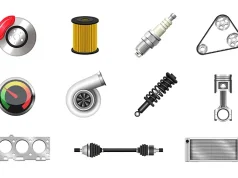
A scenic road trip is one of the most rewarding ways to explore new landscapes, unwind, and make lasting memories. With a reliable car, an adventurous spirit, and a good plan, you’re well on your way to enjoying the open road. However, to ensure a smooth and safe journey, preparation is key. This means not only planning your route and packing smartly but also protecting your vehicle against unexpected breakdowns, accidents, and other road challenges.
In this guide, we’ll walk through essential tips for making your road trip experience enjoyable and safe, from route planning and packing tips to vehicle maintenance and protection plans.
1. Plan Your Route and Stops in Advance
One of the best parts of a road trip is the freedom to explore as you go. But for a hassle-free adventure, it’s a good idea to outline a basic plan, especially if you’re venturing through less familiar areas. Research scenic routes, historical landmarks, and dining options along the way.
- Use Route Planning Apps: Apps like Google Maps, Waze, and Roadtrippers help you identify the best routes, scenic byways, and stops. These apps can also provide up-to-date traffic information, helping you avoid delays and road closures.
- Plan for Rest Stops: Driving can be tiring, especially over long distances. Plan to take breaks every two to three hours to stretch, refuel, and refresh. Many scenic routes have designated lookout points, rest areas, or small towns that make perfect stopping spots.
- Identify Gas Stations: While planning your route, keep an eye out for gas stations along the way. In some scenic areas, gas stations may be few and far between, so it’s best to keep your fuel tank at least half full at all times.
Planning your route and stops in advance helps you manage time effectively, ensuring you have ample opportunity to take in the sights without feeling rushed or tired.
2. Perform a Comprehensive Vehicle Check
Before setting off on any long road trip, make sure your vehicle is in optimal condition. A comprehensive check can help prevent inconvenient or even dangerous breakdowns along the way.
- Check Fluids: Check and, if needed, refill all essential fluids—oil, brake fluid, transmission fluid, coolant, and windshield wiper fluid.
- Inspect Tires: Proper tire pressure is essential for fuel efficiency, smooth handling, and road safety. Ensure all tires, including the spare, are in good condition and properly inflated.
- Test Brakes and Lights: Brake pads should be inspected, and all lights (headlights, brake lights, turn signals) should be working to ensure visibility and safety.
- Inspect Belts and Hoses: Look for signs of wear and tear on belts and hoses, as these are essential for proper engine function.
Many mechanics and service centers offer pre-road trip inspections to help catch potential issues before they become problems on the road. Taking the time to conduct a vehicle check can save you from unexpected hassles and expenses.
3. Consider an Auto Protection Plan
When embarking on a long road trip, having an auto protection plan can provide invaluable peace of mind. These plans, often called extended warranties, cover certain repair costs beyond the manufacturer’s warranty. This means you’re protected if unexpected repairs arise, especially when you’re far from home.
- Coverage for Major Components: Auto protection plans typically cover essential systems like the engine, transmission, and electrical components. This can be especially useful on a road trip, where unexpected breakdowns can lead to costly repairs.
- Roadside Assistance: Many auto protection plans include 24/7 roadside assistance. This feature provides support if you experience a flat tire, run out of fuel, or need towing due to a breakdown. Roadside assistance ensures you’re never left stranded.
- Rental Car Reimbursement: If your car requires repairs that will take several days, some protection plans cover rental car costs, so you can continue your journey without delay.
An auto protection plan offers a safety net, reducing both financial risk and stress. Knowing you have coverage in place allows you to focus on enjoying the adventure rather than worrying about what could go wrong.
4. Pack Smart and Light
Packing smart is key to a successful road trip. Although you may want to bring a variety of items, remember that a packed car affects fuel efficiency and overall comfort. Prioritize essentials to make the journey smoother.
- Bring Emergency Essentials: Always have an emergency kit, including items like a first-aid kit, flashlight, blanket, extra water, non-perishable food, and basic repair tools. Jumper cables, a tire jack, and a spare tire are also critical.
- Pack Lightly: Heavy packing can weigh down your vehicle, leading to reduced fuel efficiency and added strain on the engine. Consider bringing only the essentials and pack efficiently to avoid unnecessary weight.
- Organize Your Space: Keep frequently used items like snacks, water, chargers, and maps within easy reach. Organizing your car makes it easier to locate essentials without causing distractions while driving.
Packing smart also makes it easier to move items around at each stop, and a well-organized car allows for a more comfortable ride overall.
5. Stay Connected and Prepared with Technology
Using technology can enhance your road trip experience and ensure that you’re prepared for any situation.
- Navigation Apps: Besides Google Maps and Waze, consider downloading offline maps in case you lose service in remote areas. Offline maps allow you to continue navigating without relying on cellular data.
- Weather Apps: Weather can change quickly, particularly in mountainous or coastal areas. Apps like WeatherBug or AccuWeather provide up-to-date forecasts and alerts.
- Vehicle Diagnostic Apps: Certain diagnostic apps can connect to your car’s onboard diagnostics system via Bluetooth, allowing you to monitor your car’s health in real time. Apps like Torque Pro can provide insight into potential issues before they become severe.
- Safety Apps: Apps like iExit help you find nearby rest stops, restaurants, and hotels along the highway, while GasBuddy can help you find the best fuel prices nearby.
Technology makes it easier to navigate unfamiliar terrain and stay aware of potential road conditions, enhancing both convenience and safety.
6. Know Your Vehicle’s Limits
Every vehicle has its limitations, so it’s important to understand your car’s capabilities and drive within those limits. Overloading, aggressive driving, and failing to account for road conditions can increase the risk of accidents and damage to your vehicle.
- Avoid Overloading: If you’re carrying heavy luggage or equipment, check your vehicle’s weight capacity to ensure you don’t exceed it. Overloading can affect steering, braking, and fuel efficiency.
- Drive Smoothly: Maintain a steady speed, avoid rapid acceleration, and be gentle on your brakes to ensure fuel efficiency and reduce wear on your vehicle’s components.
- Consider Terrain: If your route includes mountains, deserts, or rugged roads, make sure your vehicle is prepared. Certain terrain can be hard on a vehicle, particularly if you’re driving a smaller car not designed for off-road conditions.
Driving within your vehicle’s limits keeps you safer and reduces the likelihood of issues that could leave you stranded or disrupt your trip.
7. Plan for Food and Rest Breaks
Keeping yourself rested and fueled is just as important as keeping your vehicle in top shape. Fatigue and hunger can impair your focus and reaction time, so prioritize regular breaks.
- Schedule Rest Breaks: Driving for hours without stopping can lead to fatigue, which increases the risk of accidents. Plan to take breaks every two to three hours to stretch, hydrate, and refresh.
- Stay Hydrated and Fed: Pack a cooler with snacks and water to keep your energy levels steady, especially if you’re traveling through areas with limited dining options.
- Try Local Eateries: One of the perks of road trips is exploring local food options. Use apps like Yelp to find well-reviewed local eateries along your route.
Taking care of yourself during the trip helps you stay alert and enjoy the journey more fully.
8. Prepare for Emergencies
Even with the best planning, emergencies can happen. Being prepared can make a challenging situation much easier to handle.
- Have an Emergency Contact Plan: Make sure someone knows your route and schedule. If you don’t check in as expected, they’ll know where to look for you.
- Emergency Kit for Winter and Summer: If traveling in winter, bring items like a snow scraper, shovel, and extra warm clothing. In summer, bring sunscreen, a hat, and extra water to stay hydrated.
- Vehicle Protection Plan Benefits: If your vehicle protection plan includes roadside assistance, have the contact information readily available so you can quickly call for help if needed.
Preparing for emergencies is essential, especially in remote areas, where help may be harder to reach.
Conclusion: A Well-Prepared Car for a Memorable Road Trip
A scenic road trip offers a unique way to explore new places and escape the everyday routine. By preparing your vehicle, packing wisely, and staying safe, you can focus on the beauty and adventure of the journey. Ensuring your car is protected with a vehicle protection plan adds an extra layer of security, keeping you prepared for any unexpected mechanical issues.
Whether you’re traveling through coastal roads or winding mountain passes, these essential tips will help ensure your road trip is safe, comfortable, and memorable. Embrace the adventure and enjoy the freedom of the open road!





